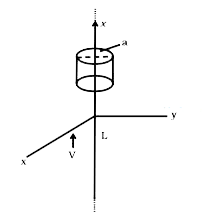the linear density of a wire under tension t varies linearly from μ1 to μ20.Calculate the time that a pulse would need to pass one to the other.The length of the wire is l
The correct Answer is:A, B, C
Step by step video, text & image solution for the linear density of a wire under tension t varies linearly from mu_(1) to mu_(20.Calculate the time that a pulse would need to pass one to the other.The length of the wire is l by Physics experts to help you in doubts & scoring excellent marks in Class 12 exams.
Updated on:21/07/2023Similar Questions
The speed of transverse waves in a wire of length L , density rho , cross - sectional area A and stretched with a tension T is given by
View SolutionTwo strings under the same tension T but with different values of the mass per unit length mu_(1) .and mu_(2) are connected together. A traveling wave pulse of amplitude 1 cm is incident on the boundary,going from mu_(1) to mu_(2) .If mu_(2)=0.1 mu_(1) ,what is approximately the amplitude of the transmitted pulse?
View SolutionThe frequency (f ) of a wire oscillating with a the length l, in p loops, under a tension T is given by f=p2l√Tμ where μ= linear density of the wire, if the error made in determining length, tension and linear density be 1%,−2%and4% then the find the percentage error in the calculated frequency.
View SolutionA string of length L consists of two distinct sections. The left half has linear mass density μ1=μ0/2 , while the right half has linear mass densityμ2=3μ0 Tension in the string is F0 . The time required for a transverse wave pulse to travel from one end of the string to the other is:
View Solutionएक अनन्त लम्बाई का पतला तार जिसका एमसमान रैखिक स्थिर आवेश घनत्व λ अक्ष के अनुदिश रखा हैं इस तार को इसकी लम्बाई के अनुदिश एकसमान वेग v=ue2 से गति दी जाती हैं पॉयन्टिंग वेक्टर S=1μ0(E×B) परिकलन कीजिए।

View SolutionA non-uniform wire of length l and mass M has a variable linear mass density given by mu = kx , where x is distance from one end of wire and k is a constant. Find the time taken by a pulse starting at one end to reach the other end when the tension in the wire is T .
View SolutionA uniform wire under tension , is fixed at its ends. If the ratio of tension in the wire to the square of its length is 360 dyne /cm^2 and fundamental frequency of vibration of wire is 300Hz , find its linear density.
View SolutionTwo strings with linear mass densities mu_(1)=0.1kg//m and mu_(2)=0.3kg//m are joined seamlesly. They are under tension of 20N . A travelling wave of triangular shape is moving from lighter to heavier string.
View Solution

